Key takeaways:
- The 1950s cinema reflected societal changes, showcasing themes like post-war anxiety, the American Dream, and the exploration of teenage culture.
- Technological advancements in color and sound significantly enhanced storytelling, allowing films to resonate emotionally with audiences.
- The evolution of movie streaming services has transformed film accessibility and representation, encouraging broader cultural conversations.
- Classic 1950s films emphasize authenticity, resilience, and the complexity of human relationships, offering timeless lessons relevant to contemporary society.
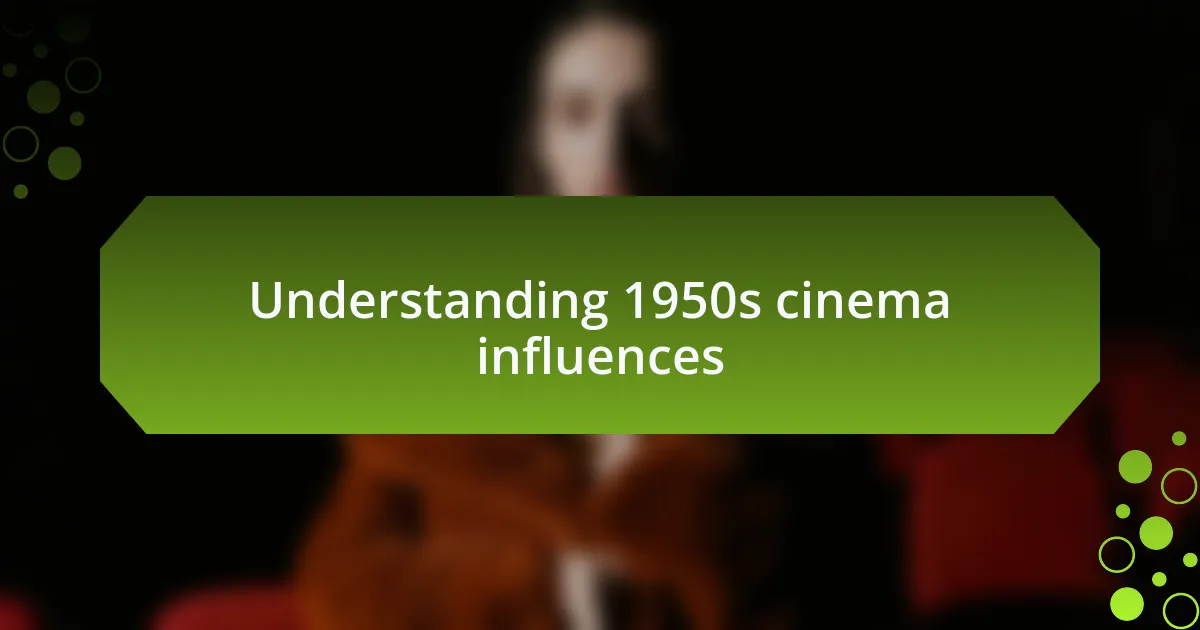
Understanding 1950s cinema influences
The 1950s was a pivotal era for cinema, where the influence of social changes began to carve out new narratives on screen. I recall watching films from this decade and feeling the weight of those stories; they often reflected the complex emotions surrounding post-war society, from the optimism of the American Dream to the underlying anxiety of the Cold War. Isn’t it fascinating how a simple film could capture the essence of a generation’s hopes and fears?
One striking influence was the emergence of teenage culture as a dominant theme, which really connected with me as I reflected on my own youthful struggles. Movies like “Rebel Without a Cause” showcased the tumult of adolescence, allowing me to feel validated in my experiences. This societal shift wasn’t just a backdrop; it was a powerful force that shaped characters and plots, making them relatable to audiences of all ages.
Additionally, the technological advancements of the time, particularly in color and sound, had an incredible impact on storytelling. I find myself engrossed in the vivid landscapes of “Singin’ in the Rain,” where the color transitions added depth to the characters’ joy and heartbreak. What role do you think technology plays in how we connect with stories? In the 1950s, it facilitated an emotional resonance that allowed film to become a profound mirror of societal values.
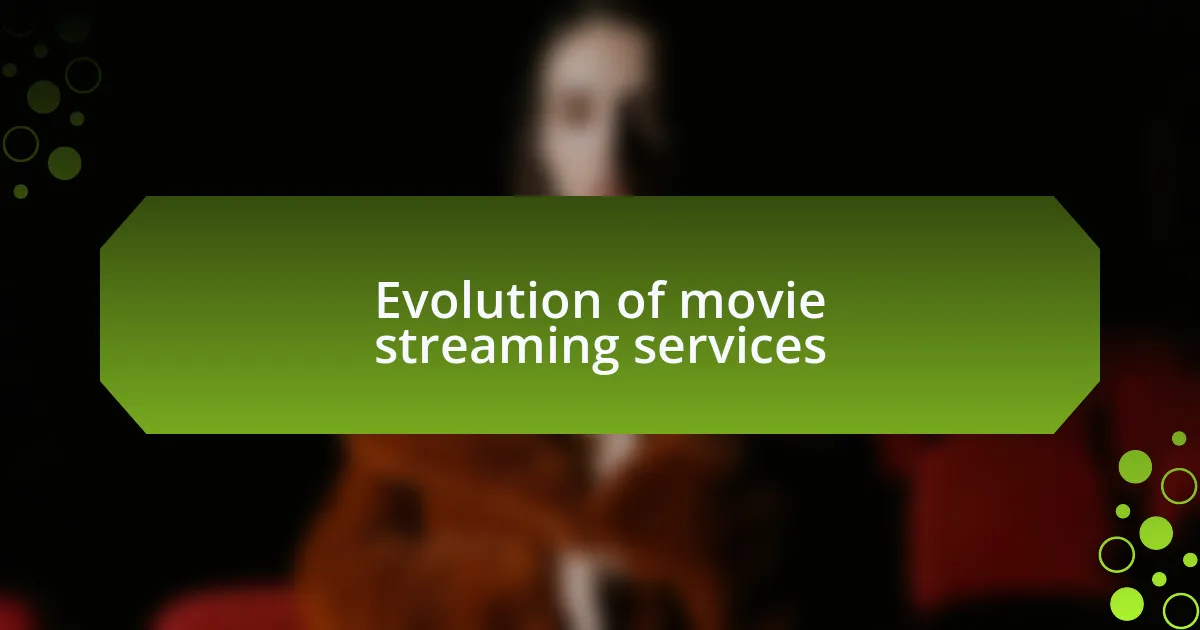
Evolution of movie streaming services
The evolution of movie streaming services has drastically transformed how we consume films, mirroring the technological innovations of past decades. I remember the excitement of first using a streaming service and marveling at the vast library of content that was just a click away. Suddenly, I had the world of cinema at my fingertips, something that felt magical compared to the days of waiting for a movie to appear on cable or struggling with VHS tapes.
As technology advanced, the shift from traditional viewing methods to digital platforms not only changed accessibility but also altered how stories are crafted and presented. The availability of diverse genres—from indie filmmaking to classic cinema—on platforms like Netflix and Amazon Prime has deepened my appreciation for storytelling. Have you ever found yourself binge-watching a series that resonated with you, compelling you to reflect on your own experiences? I certainly have, and that emotional connection is something I cherish.
Moreover, the rise of streaming services has also sparked a cultural conversation about content variety and representation in film. I vividly recall discussing how different voices and perspectives are now being highlighted through original programming on these platforms. Isn’t it empowering to see stories that reflect a wider array of experiences, allowing us to better understand one another? This evolution isn’t just about convenience; it’s reshaping the landscape of cinema for the better.
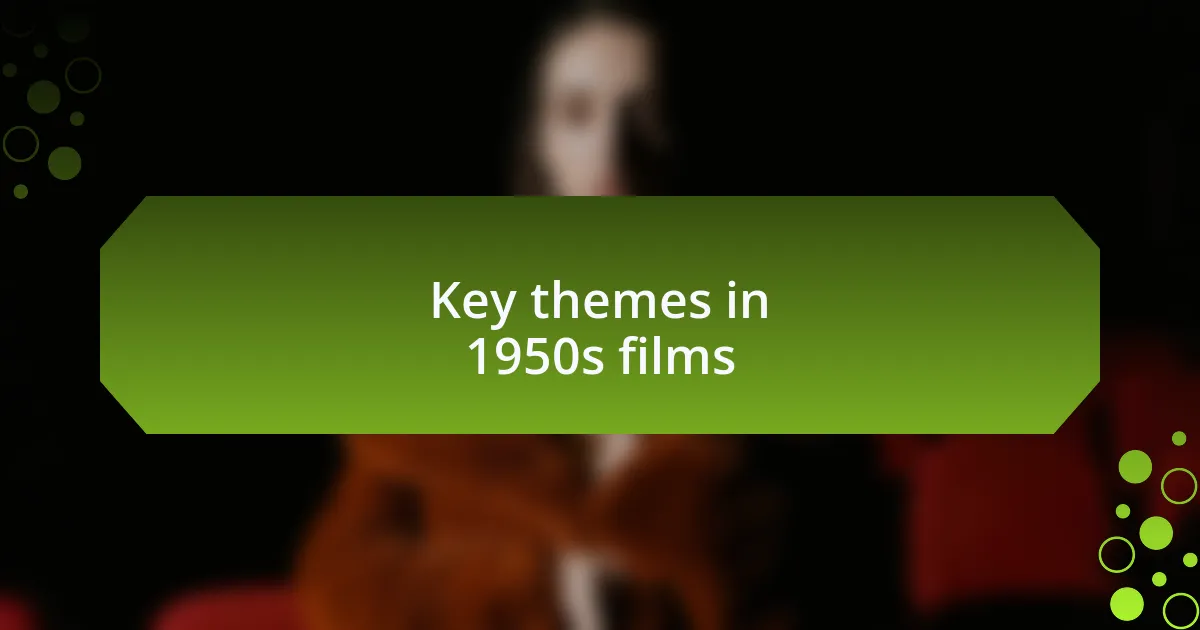
Key themes in 1950s films
Key themes in 1950s films showcase a fascinating blend of societal reflections and cinematic innovation. One prevalent theme was the exploration of family dynamics amid the changing social landscape. I remember watching “Leave It to Beaver” and feeling a wave of nostalgia, as it portrayed the idealized suburban family life while subtly addressing generational conflicts and the pressures of conformity. Isn’t it interesting how such films made us question the authenticity of that perfect family image?
Another significant theme was the impact of post-war anxiety and the fear of the unknown, which often manifested in the rise of science fiction and horror films. Movies like “Invasion of the Body Snatchers” tapped into the anxieties surrounding communism and conformity, resonating with audiences on a deeper level. I often wonder how the creators of these films truly felt, crafting narratives that both entertained and provoked thought in a society grappling with uncertainty.
Lastly, the celebration of youth culture emerged as a defining characteristic of the decade, vividly illustrated in films like “Rebel Without a Cause.” The characters embodied a sense of rebellion and emotional turmoil, echoing the struggles of the young people at that time. I can still recall feeling a mix of admiration and empathy for James Dean’s character, as he navigated the complexities of identity and belonging. How can we not feel a connection to those timeless themes, as they continue to resonate with new generations?
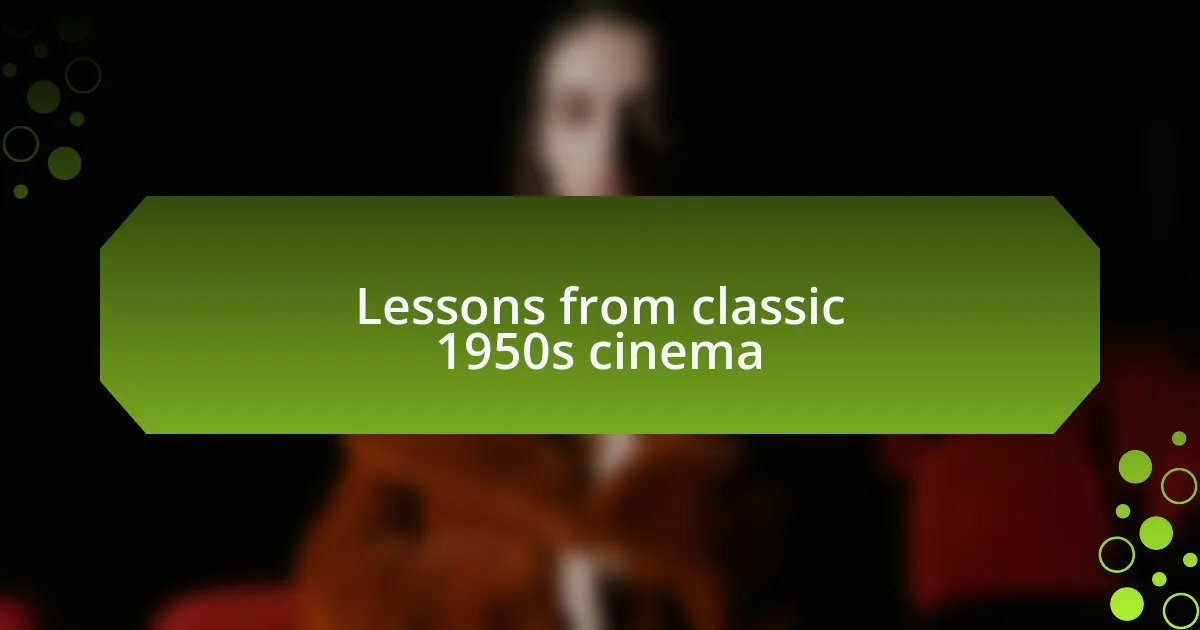
Lessons from classic 1950s cinema
The films of the 1950s taught me the value of authenticity in storytelling. I recall watching “12 Angry Men,” which proved that a single location and limited cast could create an intense exploration of moral dilemmas. The way the characters grappled with their biases and preconceived notions made me reflect on my own judgments. Isn’t it astonishing how such a simple setup can provoke profound introspection about human nature?
Additionally, the era highlighted the significance of resilience through struggle. In “The Bridge on the River Kwai,” the theme of endurance is palpable; the characters are pushed to their limits, yet they display remarkable strength. I remember feeling a surge of inspiration when witnessing their perseverance against overwhelming odds. Don’t you think that this message resonates well beyond the time it was made, reminding us that challenges can often lead to personal growth?
Moreover, 1950s cinema explored the complexity of relationships in a rapidly evolving world. Watching “Gone with the Wind” again, I was struck by the desperate love and loss experienced by Scarlett O’Hara. Her journey made me appreciate the bittersweet nature of love and how it can shape our decisions. Have you ever considered how the portrayal of such intricate emotions continues to influence today’s romantic narratives?
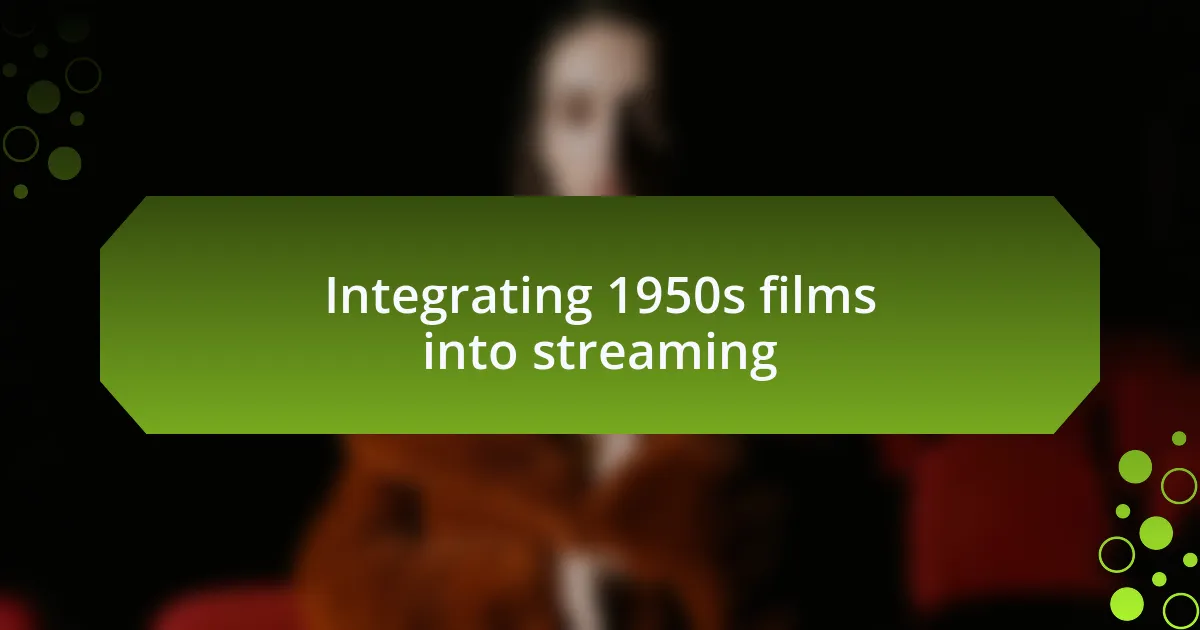
Integrating 1950s films into streaming
Integrating 1950s films into streaming platforms can breathe new life into classic cinema for modern audiences. When I revisited “Rebel Without a Cause” online, I found its examination of teenage angst strikingly relevant today. It’s fascinating to see how streaming allows films like this to remain accessible, inviting new generations to reflect on their struggles and emotions.
The idea of curated collections of 1950s films on streaming services intrigues me. Imagine binge-watching a carefully selected set of films that showcase the decade’s diversity while providing context for the cultural climate of the time. I believe that when viewers encounter classics alongside modern content, it enhances their appreciation for storytelling’s evolution—don’t you feel that sense of connection as you move through time?
As I explore different streaming platforms, I often feel a sense of nostalgia when I stumble upon gems like “Singin’ in the Rain.” The vibrant musical numbers and charming performances remind me of the joy and simplicity that film can offer. By integrating these films into our viewing habits, we not only celebrate their significance but also invite conversations about how these narratives influence current cinematic trends. Wouldn’t it be wonderful to discuss these timeless stories with fellow enthusiasts and discover new insights together?

Personal reflections on 1950s cinema
Reflecting on the 1950s cinema, I can’t help but think about how these films shaped my understanding of storytelling. I remember watching “The Seven Year Itch” for the first time and being captivated by the chemistry between Marilyn Monroe and Tom Ewell. It reminded me of the playful side of romance, something that gets often overshadowed by more serious narratives in today’s films. Have you ever had a moment in a movie that just made you smile, even long after it ended?
There’s something so enthralling about the bold themes explored in films from that era. I was struck watching “12 Angry Men,” realizing that the tense deliberation in a cramped jury room had so much to teach about justice and moral dilemmas. It got me thinking—how often do we take a step back to examine our own beliefs through the lens of cinema? The emotional weight of these stories challenges us to engage critically with our society and the values we hold.
As I delve deeper into the artistry of 1950s films, I find myself drawn to the intricate set designs and film techniques utilized. Each frame feels purposeful, representing a time when filmmakers crafted every detail with care. I recall my excitement when I noticed the shadows in “Sunset Boulevard” that mirrored the darkness of its themes. How many of us pay attention to these subtleties in modern films? There’s a richness in 1950s cinema that invites us to immerse ourselves in their world, encouraging thoughtful exploration of the art form itself.